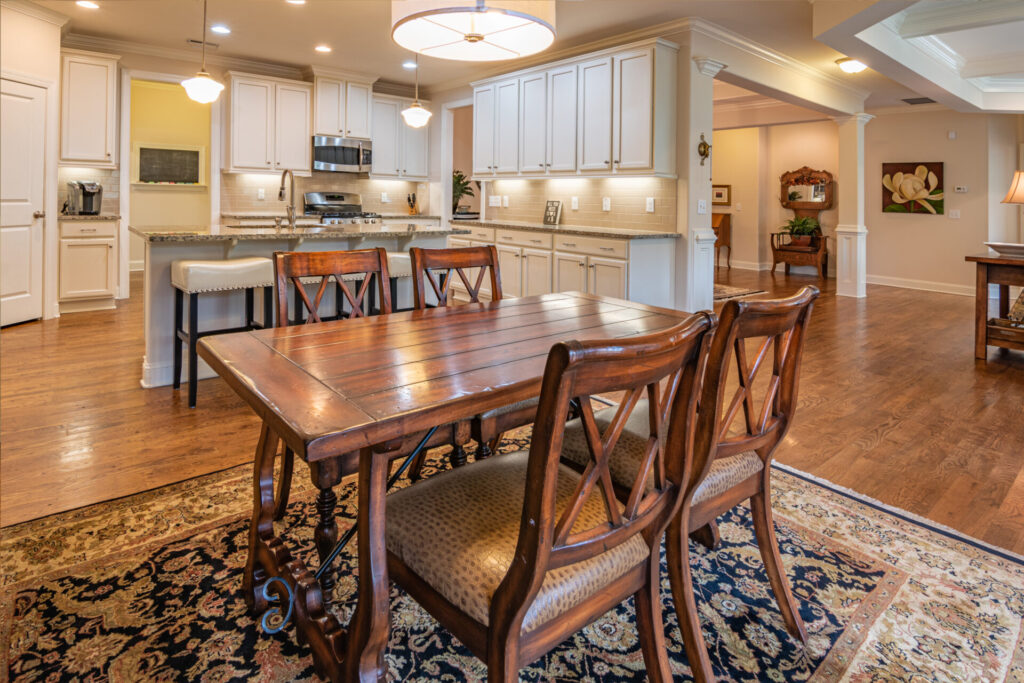
This open concept dining area, kitchen, hallway, and gathering space is quite attractive and relatively current, but it may not meet the changing aging in place needs of the client.
Each person is different
While we might like to find an improvement that we could consistently recommend for our clients, the fact is that each person and their needs are different. While there may be similar needs among various people, such as an improved entry or safer access to the bathing area, the fact is that we must approach each individual situation for what it is – a unique opportunity to help someone do better in their home environment.
We will have our favorite improvements – bathroom grab bars, wider doorways and hallways, more effective door and cabinet handles and pulls, better lighting, and more – but what we suggest and ultimately get to provide for our client is going to depend on three factors (1) their general needs, (2) their level of interest in having us complete various projects for them, and (3) their budget.
The type and construction of the dwelling and its age and general condition are also going to be factors in determining how we proceed also.
Timing is important also
Ideally, we could find a job that needs to be done today and get started on it within a couple of days – tomorrow if no permits are involved. Life is rarely ideal, however.
Clearly, some improvements are going to be more involved and complex than others – again depending on several factors, including the needs and expectations of the client.
We can’t always do things according to our schedule. As nice as it might be to lay out our calendar and then set about working it, delays happen, the needs and availability of the client change, materials aren’t always available when we need them, and several other factors can affect our well-designed plans.
Being flexible is required
Without the ability to be flexible and to be adaptable to ever-changing needs – illnesses (the client, us, or our subcontractors), material availability, price increases, and the client deciding to make last-minute changes to what they want us to do (in terms of the product we are installing, size, color, or location, for instance) – we may find our work frustrating.
However, when we are willing to take things as they come and understand that each situation and each client is different – with varied life experiences, expectations, needs, timing, and budgetary requirements – we will be able to deliver effective aging in place modifications and improvements for our clients.
The real key is that there is no template or standard that we can apply for design, services, client expectations, type of home, or anything else. It’s all individual and unique to the situation.
